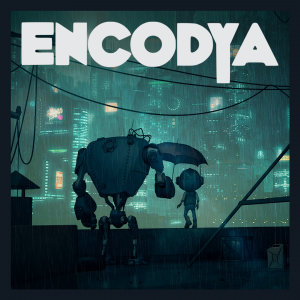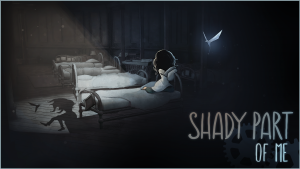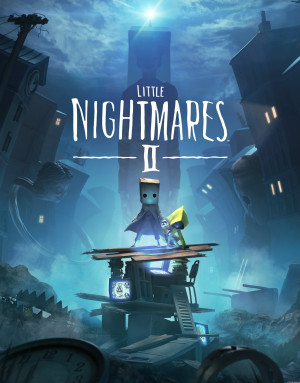Review for Chronicle of Innsmouth: Mountains of Madness
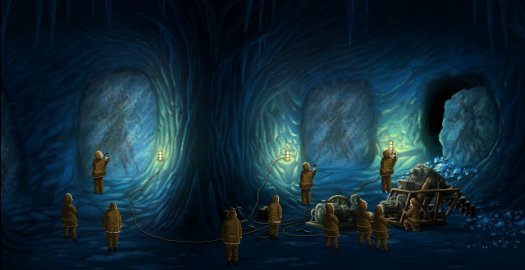
PsychoDev’s 2017 Chronicle of Innsmouth was an enjoyable, well-crafted jaunt through the eerie imagination of H.P. Lovecraft, set in an early twentieth-century New England perpetually shrouded under a blanket of darkness that seemed to conceal eldritch creatures always just out of sight, always just past the edge of the monitor, with a healthy dose of humor to boot. Though the story concluded satisfactorily enough, the team got right to work on a more serious follow-up, plumbing the famed horror author’s body of work for further source material from which to take inspiration. Though the production values are noticeably higher in Mountains of Madness, it comes in just a hair behind its predecessor in terms of all-around package, due to some frustrating puzzle design, a less satisfying narrative and an ending that feels like either time or the budget ran out, causing it to be drastically truncated.
This time around, Lone Carter, private investigator and one of first game’s two protagonists, takes over top billing, with the exception of a few scenes that let you control other characters while the tale delves into visions of faraway lands or dimensions. Lone has survived his ordeal at Innsmouth, and we begin the game with a few short scenes depicting his return to the nearby Massachusetts town of Arkham. You’d think he would be happy enough to steer clear of any further entanglement in eldritch affairs, but his close encounters of the previous game have left him partially possessed, always in danger of losing his sanity and changing into a tentacled horror if exposed to certain conditions.
While tying up the remaining loose ends of the Innsmouth case, Lone comes across the aftermath of a grisly ritual murder, bodies mutilated and dismembered, with strange runes left behind at the crime scene. The cult worshipping the Old Ones has surfaced in Arkham, and it’s no accident that it is crossing paths with the embattled detective once again. Teaming up with a handful of other like-minded individuals (among them the occult writer William Blanko, who bears a surprising similarity to a certain well-known author of the supernatural of that time; and Henry Akeley, a scholar devoted to gaining the knowledge of the Ancients), Lone gets sucked into an investigation that takes the group all around Arkham and eventually to an archeological dig in the frozen wasteland of the Antarctic and the titular mountains of madness.
The opening hours can be a bit disorienting from a storytelling perspective. In short order, Lone declares his need to find a cure for his condition, then stumbles into a murder investigation that he decides to pursue. It’s a front-heavy objective overload that is further let down by weak character motivations and plot threads not tying together in a satisfying way. Events happen, and you’re guided from one location to the next, accomplishing certain goals along the way, but the story itself isn’t connecting the dots in a meaningful or coherent fashion.
A clue found in the newspaper archives takes you to an insane asylum, where speaking with an inmate leads to the graveyard to check for a certain name on a tombstone, and later to actually exhume a grave in the dead of night. It’s certainly a logical sequence of events, but I never felt like I was actually uncovering any meaningful clues or shedding light on a significant piece of the mystery. Later at the wintry dig site, you’re asked to look into the deaths of two crewmen. As the player you’ll recognize them from an earlier scene and understand the plot connection, but Lone and company have no way of knowing this, and simply agree because they have a bit of free time on their hands. In short, you’re along for the ride but shouldn’t question the specifics too much.
Perhaps sensing a need to tighten their wandering story, the developers opted to insert a handful of abrupt exposition dumps – among the few times the omniscient narrator chimes in – but these chip away further at the sense of discovery, detailing events that happen off-screen or what people are thinking rather than allowing players to intuit this from the actual characters during gameplay. The end result is a collection of scenes that work just fine individually but struggle to form a cohesive whole, an issue compounded by this game being the second part in a series that, based on the sequel-baiting ending, still isn’t complete.
The finale itself wrests control away from players in what should be a climactic scene, opting to go with a cinematic one instead that simply fades to black. It falls to the narrator to fill us in on what actually happened before the credits roll, which is extremely unsatisfying and feels like money or time ran out and the originally intended ending had to be scrapped. The ritual murders have already been resolved by then, but there’s very little noteworthy about the revelation and it has almost no impact on the overall narrative. The main characters themselves are harder to get a read on this time around as well – they’re not the easily identifiable archetypes we saw in the previous game. Neither Blanko nor Akeley are well fleshed out or given enough to do to build up much of a connection with them. Akeley especially suffers from this, as he’s introduced relatively late and isn’t the most likeable addition. Once again, we’re forced to fill in the blanks ourselves, assuming the group has been building relationships off-screen (perhaps during the lengthy biplane ride to the Antarctic), so much so that a late-game attempt at an emotional character moment just falls flat.
A successful Kickstarter campaign allowed for a more sizeable budget this time, leading to increased production values. While the original Chronicle of Innsmouth featured some very rudimentary pixel art (and this is coming from someone who enjoys this retro aesthetic), this entry ups the visual ante considerably. Characters and backgrounds have received a significant facelift that echoes mid-to-late-nineties territory now. The loft murder scene, a city in the Arabian desert, even the impossible geometry of the Great Old Ones’ realm – whether mundane or fantastical, each location is clean and nicely detailed. Interspersed are plenty of hand-drawn close-ups and still images, including a bit of blood and gore (disemboweled torso, anyone?), while the car ride through the New England countryside to Akeley’s home is beautifully animated. The Ancients themselves are encountered rarely, generally as shadows or sculptures, but don’t be surprised to see one rear its ugly head at some point.
The game is fully voiced, with the majority of performances falling between passable and good. Lone’s actor returns for a second turn, and overall the leading roles are well done. If their personalities come across as a little flat, it’s more due to a script that needed to give them a bit more character, and perhaps more moments of levity to bolster the otherwise macabre atmosphere (something its predecessor ably managed). The actual audio quality is a little more variable; the sometimes-clear, sometimes-muffled recordings smack of homebrew voice-over sessions conducted using generic software. The music matches the tone well enough, once again taking advantage of the developer’s in-house band to contribute several pieces to the score. Subdued, atmospheric tracks mingle with lovely piano compositions underscored by synthesizer pieces in a way that’s always noticeable, but never out of place or grating.
Gameplay has been simplified in Mountains of Madness, doing away with the earlier game’s SCUMM-inspired interface. Character movement responds to single mouse-clicks, and this time around each hotspot has two basic functions: left-clicking interacts with it on a normal level (whether picking up, reading, using, activating, etc.), while right-clicking examines it. That’s it. There are no timed sequences, though two overhead city scenes require you to avoid certain unsavory individuals, and there’s a lockpicking puzzle that neglects to clue you in that your fine-motor skills are needed to activate each pin in the lock only to a certain degree or else they all reset. (I spent quite a while on this thinking I was simply too slow or hadn’t discovered the correct order yet.) Inventory puzzles appear throughout, which are generally fair and provide some fun moments, like working out how to snatch a piece of paper from a neighbor’s flat through a miniscule hole in the wall connecting both rooms.
While the streamlined controls do away with some of the first game’s inherent guesswork, one or two other frustrating puzzles chip away at the built-up goodwill. For example, a particular scene in a church requires correctly interpreting the numerals found on the pews in order to unlock a secret panel in the pulpit. But there are no apparent clues for how to do this, and the characters don’t provide any useful insights, just spouting the same unhelpful lines of dialog over and over when questioned. You can’t leave the area, which is the only way I knew that I was supposed to be able to solve the puzzle as it was and hadn’t missed a key item elsewhere, and the hotspot highlighter confirmed that, yes, I really had checked every single point of interaction.
One late-game “puzzle” requires taking several elevator platforms to reach the top of a structure, but the platforms raise and lower in different configurations based on the order they’re activated, ending in a trial-and-error exercise rather than one that requires piecing together clues or forethought. Another challenge that’s likely to divide players is one that requires you to mix a certain alchemical formula following mathematical instructions. For those able to perform calculations with ease, this puzzle represents an engaging brainteaser, absolutely fair and nicely implemented, but those without a penchant for numbers will likely curse this task and look up a guide instead. The puzzles here are generally good overall, but there’s bound to be at least one that most players have a rough time with, not least because many of them lack an explanation, making the act of operating them the real puzzle.
Mountains of Madness does what we would expect most sequels to do. It looks and sounds better than the first game and moves the story forward, building on what came before it. Unfortunately, its lofty aspirations also cause it to stumble in ways the original didn’t. The story this time doesn’t connect as organically, and it relies on sudden bursts of exposition to progress from one act to another, which feels jarring at best. A blink-and-you-miss-it finale also lets down the already anticlimactic ending. Add to that some moments of utter frustration mixed into an otherwise fairly well-done mix of puzzles, which are sure to upset those of us who like to get through our games without the aid of a walkthrough. It’s also an emphatically different follow-up, grimmer in tone than its predecessor. Ultimately, then, it doesn’t manage to rise to the level of its predecessor, even with superior production values, but there’s enough here to make this a decent second chapter. Here’s hoping the teased third entry is able to unite the best of both worlds while tying up all loose ends for good.
WHERE CAN I DOWNLOAD Chronicle of Innsmouth: Mountains of Madness
Chronicle of Innsmouth: Mountains of Madness is available at:
We get a small commission from any game you buy through these links (except Steam).Our Verdict:
After surviving the first Chronicle of Innsmouth, Lone Carter returns in Mountains of Madness, which attempts to ambitiously expand its predecessor’s narrative scope but is unable to successfully scale that particular peak. There’s a lot to like and a noticeable graphical improvement, but ultimately this entry will go down as the weaker of the pair.


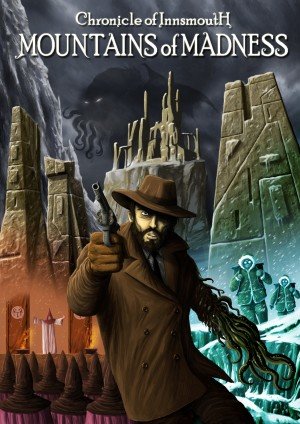
_capsule_fog__medium.png)





